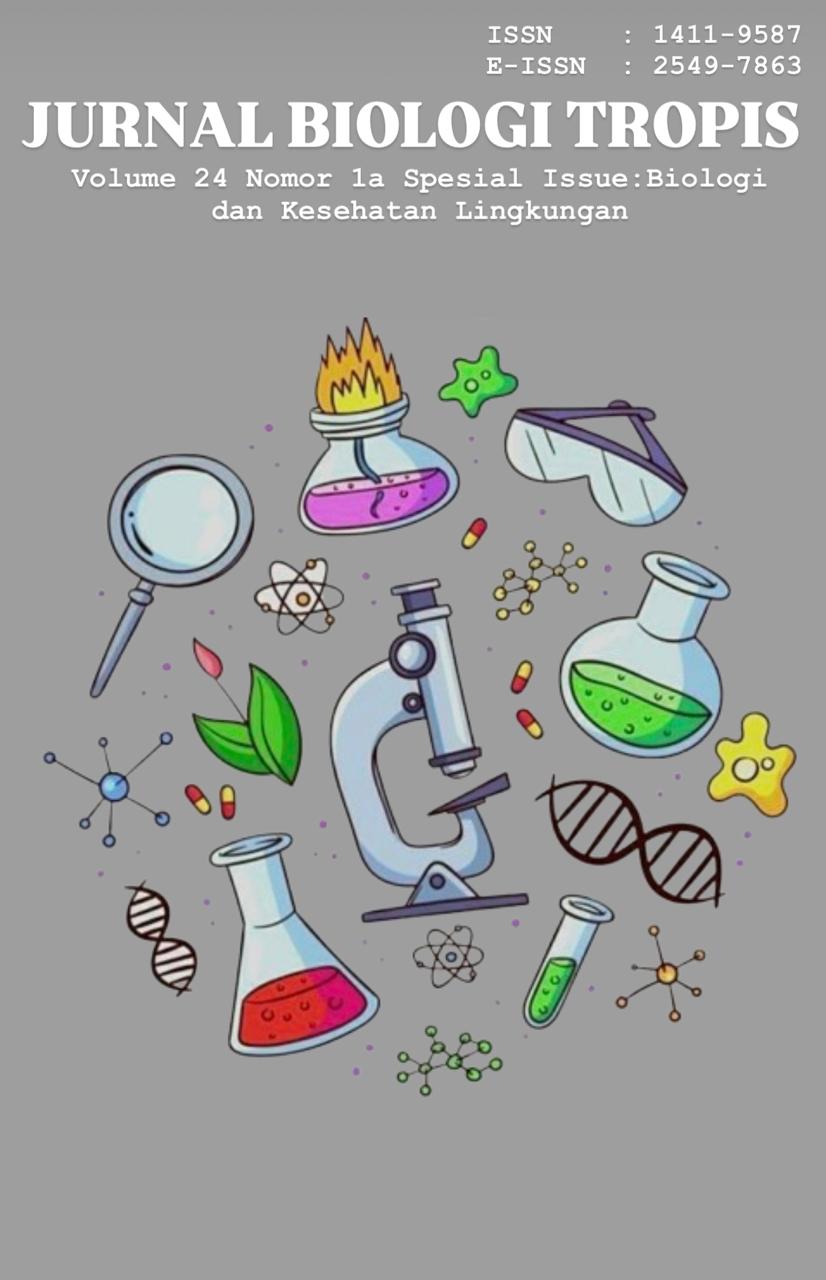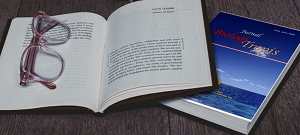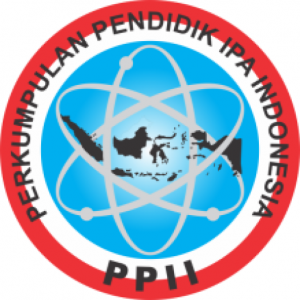Biochemical and Organoleptic Characterization of Tamarillo Wine as Alternative Base Material for Alcoholic Beverage Production
Authors
Antonia P. Bao , Umbu N. Limbu , Fransiska So'oDOI:
10.29303/jbt.v24i1b.8026Published:
2024-12-11Issue:
Vol. 24 No. 1b (2024): Special IssueKeywords:
Biochemistry, fermentation, organoleptic, tamarillo, wine.Articles
Downloads
How to Cite
Downloads
Metrics
Abstract
The Tamarillo fruit, commonly known as the Dutch Eggplant (Solanum betaceum), is one of the tropical fruits that thrives in the Bajawa region of Ngada Regency. However, the fruit is still consumed directly or without further processing into food or beverage products. A study aimed at determining the effect of the concentration of tamarillo fruit on the biochemical and organoleptic characteristics of tamarillo wine. The biochemical characteristics to be measured include ethanol content, reducing sugar content, total acidity, pH, antioxidant content, as well as the number of live and dead yeast. Meanwhile, organoleptic aspects include color, clarity, aroma, taste, and the preferences of the panelists. The research method used is a completely randomized design with 3 treatments, namely the concentration of Dutch eggplant fruit: water ratios of 1:1, 1:2, and 1:3, with 3 replications for each treatment. The research results show that the wine made from starfruit with a concentration treatment of 1:3 has the highest biochemical characterization results, including ethanol content, total acidity, pH, antioxidants, viable yeast count, and dead yeast count, compared to the concentrations of 1:1 and 1:2. However, it has the lowest reducing sugar content. The organoleptic test shows that the wine with a treatment concentration of 1:3 has the highest scores for color, clarity, aroma, taste, and preference because it has a red color, clarity, fruity and alcoholic aroma, fruity and alcoholic taste, and is favored by the panelists.
References
Bao, A.P. (2019). Pengaruh Berbagai Macam Pepaya Terhadap Kadar Etanol dan Cita Rasa Wine Pepaya. Unpublished Skripsi, Universitas Sanata Dharma Yogyakarta.
Bao, A.P., Nuringtyas, T.R., Retnaningrum, E. (2022). Karakterisasi Biokimiawi, Mikrobiologis dan Fisikawi Wine papaya (Carica papaya L.) dan Wine Karika (Carica pubescens Lenne & K. Koch). Tesis. Universitas Gadjah Mada. Yogyakarta
Bao, A.P., Limbu, U.N., & Azi, P.Y. (2024). Kajian Minuman Tradisional Moke Sebagai Objek Gastronomi pada Masyarakat Bajawa Kabupaten Ngada. Jurnal Pertanian Unggul, 3(1): 73-79.
Djufry, F., Limbongan, J., Lade, N., & Saranga, B. (2016). Karakterisasi Tanaman Tamarillo di Sulawesi Selatan. Buletin Plasma Nutfah, 22(2):127-136.
Fahrizal., Abubakar, Y., Muzaifa, M., & Muslim. (2013). The Effect of Temperature and Length of Fermentation on Bioethanol Production from Arenga Plant (Arenga pinnata Merr.). International Journal on Advance Science Engineering Information Technology, 3(3): 54-57. DOI: 10.18517/ijaseit.3.3.328.
Gunam, I.B.W., Ardani, N.N.S., & Antara, N.S. (2018). Pengaruh Konsentrasi Starter dan Gula Terhadap Karakteristik Wine Salak. Jurnal Ilmiah Teknologi Pertanian, 3(1): 289-296. DOI: 10.24843/JITPA.2018.v03.i01.p05.
Hartley, C. (2017). Australian Wine. Gramedia Pustaka Utama. Jakarta.
Hawusiwa, E.S., Wardani, A.K., & Ningtyas, D.W. (2015). Pengaruh Konsentrasi Pasta Singkong (Manihot esculenta) dan Lama Fermentasi pada Proses Pembuatan Minuman Wine Singkong. Jurnal Pangan dan Agroindustri, 3(1): 147-155.
Kusuma, P.A., Chuzaemi, S., & Mashudi, D. (2019). Pengaruh Lama Waktu Fermentasi Limbah Buah Nanas (Ananas comosus L. Merr) Terhadap Kualitas Fisik dan Kandungan Nutrien Menggunakan Aspergillus Niger. Jurnal Nutrisi Ternak Tropis, 2(1): 1-9. DOI: 10.21776/ub.jnt.2019.002.01.1.
Laksana, D.N.L., Ria, F.X., Meo, M.C., Roja, R., Nono, U., Beka, D., Bopo, G., Woa, M.E., Klau, A.E., Lewa, Y.F., Wawo, M.O., Bozu, P.,Ega, M.F., & Laksana, D.N.L. (2021). Pemberdayaan Masyarakat Desa Malanuza Nusa Tenggara Timur Melalui Pelatihan Pembuatan, Pengemasan, dan Pemasaran Makanan Olahan Bernutrisi Tinggi Berbahan Dasar Moke. Jurnal Abdimas Ilmiah Citra Bakti, 2(2): 174-182. DOI: 10.38048/jailcb.v2i2.398.
Limbu, U.N., Bao, A.P., Lea, V.C., Bhae, C.Y.N., & Prihatin, P. (2024). Etnoscience of Traditional Alcoholic Beverages (Moke Putih) of Ngada east Nusa Tenggara. Jurnal Biologi Tropis, 24(2): 872-880. DOI: DOI:10.29303/jbt.v24i2.6874.
Maharani, M.M., Bakrie, M., & Nurlela. (2021). Pengaruh Jenis Ragi, Massa ragi dan Waktu Fermentasi Pada Pembuatan Bioetanol dari Limbah Biji Durian. Jurnal Redoks, 6(1): 57-65: DOI: 10.31851/redoks.v6i1.5200.
Nge, S.T., & Ballo, A. (2022). Pengaruh Lama Fermentasi Terhadap Kadar Alkohol dan Tingkat Kesukaan Wine Sorgum (Sorghum bicolor L. Moench). Jurnal Ilmiah Teknologi Pertanian AGROTECHNO, 7(2): 146-152. DOI: 10.24843/JITPA.2022.v07.i02.p08..
Purwoko, T. (2007). Fisiologi Mikrobia. Bumi Aksara. Jakarta.
Pasaribu, M.Y.A., Mayub, A., & Nursa’adah, E. (2024). Karakterisasi Biokimiawi, Mikrobiologis dan Fisikawi dari Wine Limbah Buah Nangka (Artocarpus heterophyllus Lamk). Metamorfosa Journal of Biological Sciences, 11(1): 171-181. DOI: 10.24843/metamorfosa.2024.v11.i01.p17.
Pawignya, H. (2010). Minuman Beralkohol. Gramedia Pustaka Utama. Jakarta.
Pranadewi, P.M.A. (2020). Persepsi Konsumen Terhadap Wine Salak Baliwen. Jurnal Kepariwisataan, 19(1): 65-72. DOI: DOI: 10.52352/jpar.v19i1.411.
Wijaya, I.P.A.S., & Rinayanthi, N.M. (2024). Inovasi Pembuatan Wine Berbahan Dasar Buah Nanas dan Semangka dengan Menggunakan Tuak sebagai Bahan Pengganti Ragi. PARIS: Jurnal Pariwisata dan Bisnis, 3(3): 464-471. DOI: 10.22334/paris.v3i3.
Sari, N.P.Y.W., Permana, I.D.G.M., & Sugitha, I.M. (2018). Pengaruh Perbandingan Terong Belanda (Solanu betaceum Cav.) dengan Rumput Laut (Eucheuma cottonii) Terhadap Karakteristik Leather. Jurnal ITEPA, 7(2): 65-75.
Sastrawan, I.P.A., Duniaji, A.S., & Wisaniyasa, N.W. (2022). Pengaruh Konsentrasi Sukrosa Terhadap Karakteristik Wine Kopi Arabika Kintamani. ITEPA: Jurnal Ilmu dan Teknologi Pangan, 11(3): 462-472. DOI: 10.24843/itepa.2022.v11.i03.p07.
Situmorang, D.R. (2012). Kualitas Minuman Serbuk Instan Buah Terong Belanda (Solanum Betaceum Cav.) dengan Variasi Kadar Maltodekstrin. Universitas Atma Jaya Yogyakarta.
Stephanie, M.M., Pantjajani, T., & Goeltom, M.T. (2019). Fermentasi Anggur (Wine) dari Mangga Kuwini (Mangifera odorata) menggunakan Saccharomyces cerevisiae. Calyptra: Jurnal Ilmiah Mahasiswa Universitas Surabaya, 7(2): 4600-4616.
Suhardini, P.N. & Zubaidah, E. (2016). Studi Aktivitas Antioksidan Kombucha dari Berbagai Jenis Daun Selama Fermentasi. Jurnal Pangan dan Agroindustri, 4(1)
Suzanna, A., Wijaya, M., & Fadilah, R. (2019). Analisis Kandungan Kimia Buah Terong Belanda (Cyphomandra betacea) Setelah Diolah Menjadi Minuman Ringan. Jurnal Pendidikan Teknologi Pertanian, 5(4): S21-S36. DOI: 10.26858/jptp.v5i0.8555.
Tefa, P., Ledo, M.E.S. & Nitsae, M. (2022). Variasi Konsentrasi Saccharomyces cerevisiae dalam Pembuatan Wine Buah Dilak (Limonia acidissima). SCISCITATIO, 4(1): 32-38. DOI: 10.21460/sciscitatio.2023.41.112.
License
Copyright (c) 2024 Antonia P. Bao, Umbu N. Limbu, Fransiska So'o

This work is licensed under a Creative Commons Attribution 4.0 International License.

Jurnal Biologi Tropis is licensed under a Creative Commons Attribution 4.0 International License.
The copyright of the received article shall be assigned to the author as the owner of the paper. The intended copyright includes the right to publish the article in various forms (including reprints). The journal maintains the publishing rights to the published articles.
Authors are permitted to disseminate published articles by sharing the link/DOI of the article at the journal. Authors are allowed to use their articles for any legal purposes deemed necessary without written permission from the journal with an acknowledgment of initial publication to this journal.


























